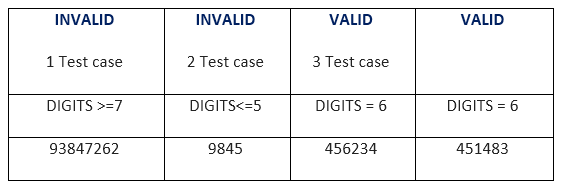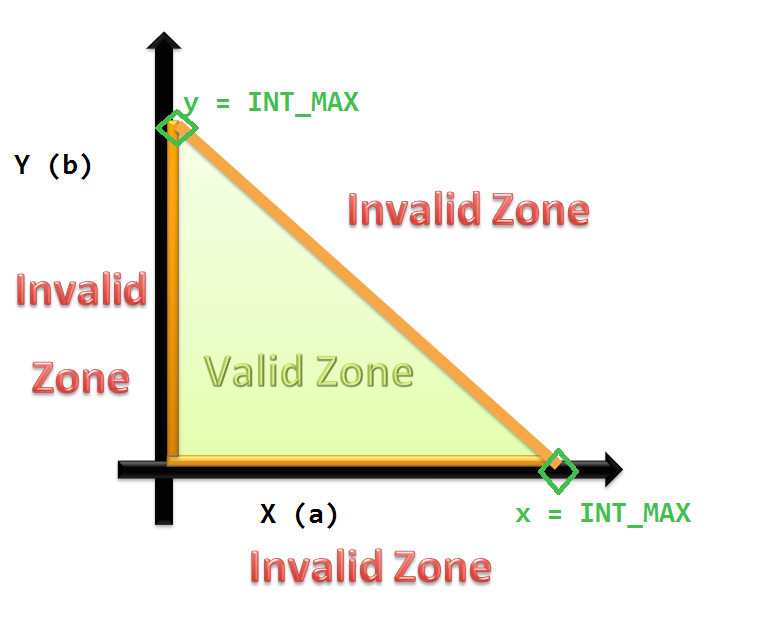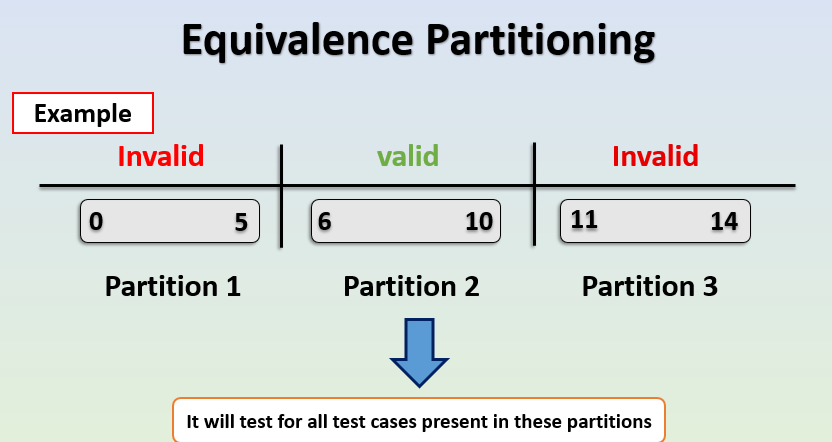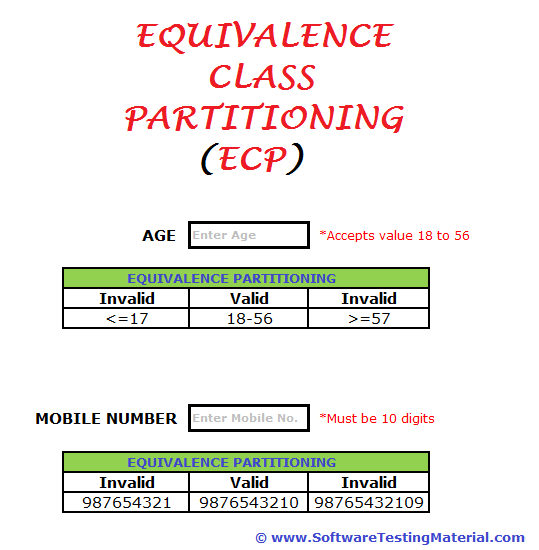BLACK BOX B INPUT PARTITIONING TESTING
Handling multiple inputoutput streamsfiles. Leads to a flow-graph-like model which enables application of techniques from the white-box world on the black-box model.

Equivalence Partitioning Method Geeksforgeeks
So the input values are grouped and representative input from each group is tested.

. An ideal test case identifies class of error that might require many arbitrary test cases to be executed. Input coverage tests b. Black box testing is used to test the system against external factors responsible for software failures.
If an input condition specifies a number of values test cases should be developed to exercise the minimum and maximum numbers and values just above and below these limits. Equivalence partitioning is a black-box testing method that divides the input domain of a program into classes of data from which test cases can be derived. - evaluate testability of requirements - define testable units within a program specification - apply black-box test input selection methods - specifically boundary-value analysis fuzzing and random selection - and select the method most-suited to achieve the given testing objective - assess the fault-finding effectiveness of a.
B Equivalence partitioning Boundary Value Analysis Data Flow are Black Box Testing Techniques. Black box test techniques has been categorized into four parts which are as following. Input Partitioning Testing c.
Equivalence class partitioning ECP Boundary value analysis BVA Decision table State transition. Output coverage tests c. - It is a software testing technique that divides the input data of a software unit into partitions of equivalent data from which test cases can be derived.
But there are defined rules and best practices that can make it more useful and scientific. A tester provides an input and observes the output generated by the system under test. It is a software testing technique or black-box testing that divides input domain into classes of data and with the help of these classes of data test cases can be derived.
Black box testing is a Testing either functional or non-functional without reference to the internal structure of the component or system. Explain each of the following testing methods as applied to Black Box testing. Equivalence partitioning is a technique of software testing in which input data is divided into partitions of valid and invalid values and it is mandatory that all partitions must exhibit the same behavior.
It is one of the most important and helpful Black box testing techniques for equivalence partitioning. The testing team does not cover the inside details such as code server logic and development method. Inputs to the software or system are divided into.
This testing methodology looks at what the available inputs for an application are and the expected outputs that should result from each input. This testing approach focuses on the input that goes into the software and the output that is produced. Leads to a logical partitioning of the inputoutput domain into interestingsubsets Analysis of the observable black-box behaviour.
Black box test methods output coverage testing. It is a software testing technique that divides the input test data of the application under test into each partition at least once of equivalent data from which test cases can be derived. Equivalence Partitioning Method is also known as Equivalence class partitioning ECP.
An ideal test case single-handedly uncovers a class of errors that might otherwise require many cases to be executed before the general error is observed. Input Partitioning Hybrid Testing e. Explain each of the following testing methods as applied to.
What is Equivalence Partitioning. This makes it possible to identify how the system responds to expected and unexpected user actions its response time usability issues and reliability issues. Black box test techiniques Specification Based Black Box test techniques 1Equivalence Partitioning.
Input Robustness Testing f. Equivalence partitioning is a black-box testing technique that applies to all levels of testing. Input Boundary Testing.
Rather than concentrating on the range of input values this approach is capable of discovering problems in the limitations of input values. Equivalence Partitioning Equivalence partitioning is a black-box testing method that divides the input domain of a program into classes of data from which test cases can be derived. Black Box Shotgun Testing d.
So in this method internal structure of program is not considered tester should provide input set to the program and test whether the program is giving expected output or not. Test case design for equivalence partitioning is based on an evaluation of equivalence classes for an input condition. If a condition of one partition is true then the condition of another equal partition must also be true and if a condition of one partition is false then the condition of another equal.
An advantage of this approach is it reduces the time required for performing testing of a software. Equivalence Partitioning Equivalence Partitioning or Equivalence Class Partitioning is type of black box testing technique which can be applied to all levels of software testing like unit integration system etc. Black box testing involves testing a system with no prior knowledge of its internal workings.
Equivalence Partitioning also called as equivalence class partitioning. Explain a Black Box method and give its advantages 2. Black-box testing requires no knowledge of internal paths structures or implementation of the SUT.
For input ranges bounded by a and b test cases should include values a and b and just above and just below a and b respectively. The three 3 kinds of Black Box Methods are a. Input Partitioning Testing c.
This technique of black-box testing divides the input fields of the program into the categories. BVA may be used to evaluate any program that has a boundary or extreme values. Nirja Shah -Posted on 26 Oct 15.
It is abbreviated as ECP. An equivalence class represents a set of valid or invalid states for input conditions. Most of us who dont know this still use it informally without even realizing it.
Explain each of the following testing methods as applied to Black Box testing. Three major approaches Analysisoftheinputoutput domain oftheprogram. Functionality coverage tests What are these methods above based on.
Which of the following is true about White and Black Box Testing Technique- A Equivalence partitioning Decision Table and Control flow are White box Testing Techniques. Boundary Testing comes after the Equivalence Class Partitioning. There can be many input values and exercising all values while testing becomes a lengthy process.
After completing this course you will be able to. Black-box testing is a testing strategy based on requirements and specifications. In this way many inputs can be exercised at once.
- In principle test cases.

Equivalence Portioning Technique In Black Box Testing Javatpoint

Black Box Testing Techniques With Examples By Aswanthjointviews Medium

Equivalence Partitioning Method Geeksforgeeks

Testing Tools Boundary Value Analysis Equivalence Partitioning With Examples

Black Box Testing An In Depth Tutorial With Examples And Techniques

The Role Of Equivalence Partitioning Test Technique Testorigen

Equivalence Partitioning And Bva Efficient Test Case Design Shift Asia Software Qa Professionals

Black Box Testing Technique Codenbox Automationlab

Equivalence Partitioning Test Case Design Technique Software Testing Material
Belum ada Komentar untuk "BLACK BOX B INPUT PARTITIONING TESTING"
Posting Komentar